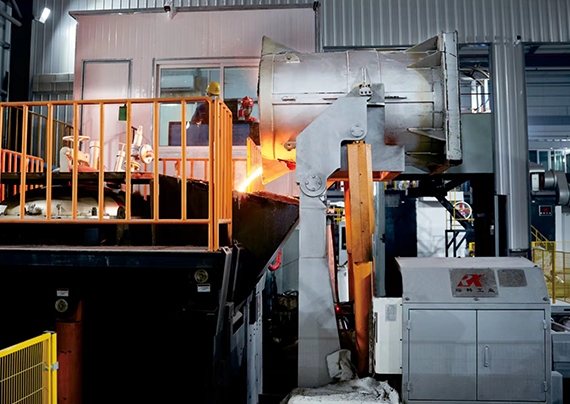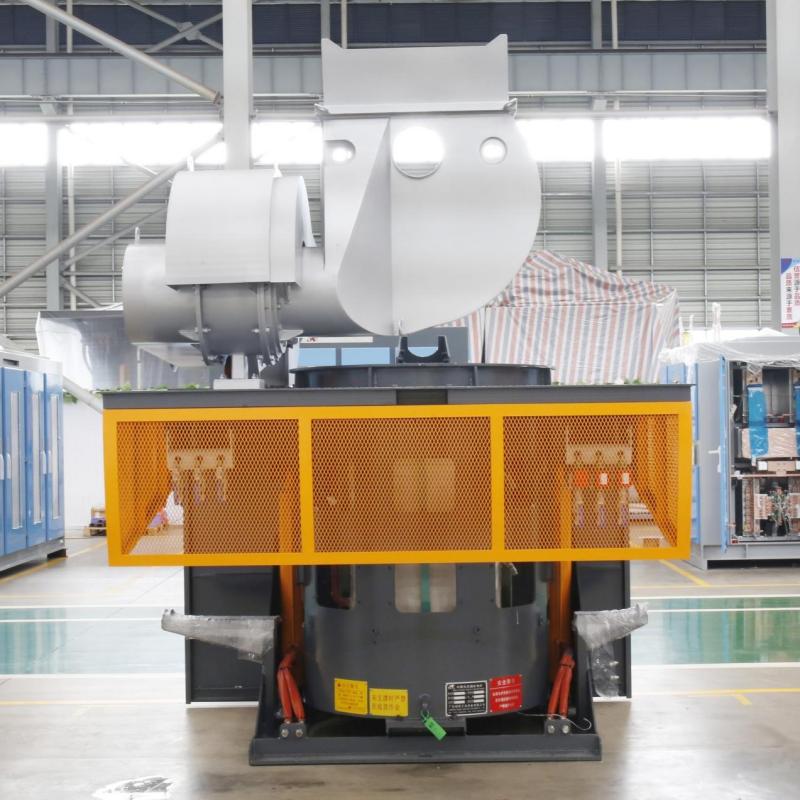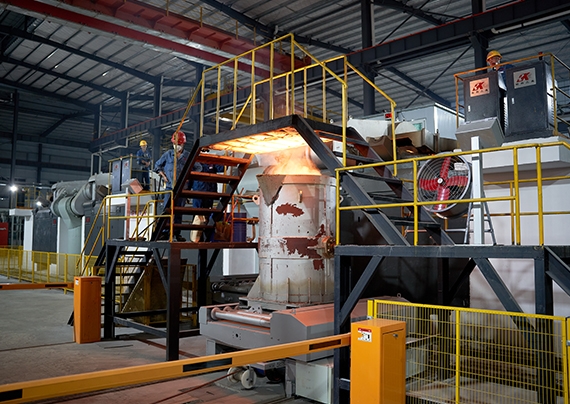
Steel Frame Intermediate Frequency Coreless Induction Furnaces
Coreless induction furnaces are a crucial component in various industries, including metal casting, steelmaking, and heat treatment. These furnaces, like the Intermediate Frequency Coreless Induction Furnace, are designed with advanced technology and materials to enhance safety, stability, and energy efficiency in production processes. Guangdong Rongke Industrial Equipment Co., Ltd., established in 2020, is a leading high-tech enterprise specializing in the research, development, and production of induction furnaces. With a significant investment from Foshan Rongke Industrial Electric Furnace Co., Ltd., Guangdong Rongke boasts a skilled team of over 220 individuals, including more than 30 R&D professionals. Our product range includes medium frequency induction melting furnaces, power supplies, heating systems, automatic feeding systems, and more, making them one of the few comprehensive suppliers in the industry.
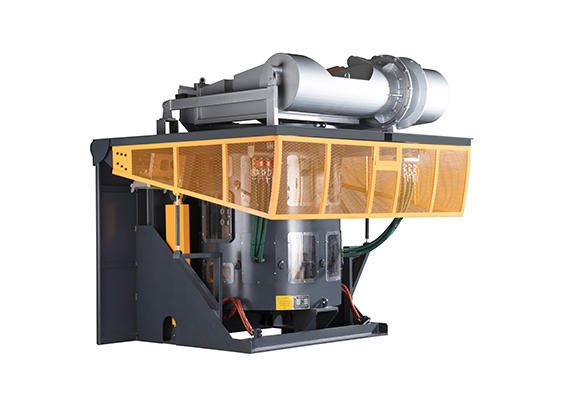
In this context, the design of the steel frame in intermediate frequency furnaces plays a critical role in ensuring the furnace’s structural integrity and operational efficiency. This essay explores the importance of steel frame design in enhancing the performance and longevity of intermediate frequency furnaces.
Steel Frame Design
Steel Frame Structure
The steel frame in an intermediate frequency furnace acts as its structural foundation, providing essential support and stability. Typically crafted from high-quality steel, this frame is meticulously engineered to endure the harsh industrial environment and the rigorous demands of furnace operation. Its precise design ensures optimal performance and long-lasting durability.
Benefits of Steel Frame Usage
- Durability: Steel frames are renowned for their robustness, ensuring the furnace can endure the challenging conditions of metal smelting and casting.
- Stability and Rigidity: The inherent rigidity of steel frames helps maintain the alignment of crucial components like the crucible and induction coils, ensuring consistent performance.
- Thermal Stress Resistance: Steel’s exceptional thermal properties enable the frame to withstand the intense heat generated during furnace operation without warping or weakening.
- Enhanced Safety: The sturdy steel frame enhances furnace safety by providing a secure platform for operation, minimizing the risk of accidents or malfunctions.
Working Principle
Coreless Induction Furnace Operation
Coreless induction furnaces operate based on electromagnetic induction principles. The furnace consists of a refractory crucible surrounded by a water-cooled copper coil. When alternating current flows through the coil, it creates a rapidly alternating magnetic field. This magnetic field induces eddy currents in the conductive metal charge inside the crucible, generating heat through resistance. The heat melts the metal charge, allowing for casting or other processes.
The furnace is equipped with various systems to support its operation, including a tilting furnace drive system for controlled pouring, a cooling system to prevent overheating, and a dust hood for environmental protection. The hydraulic system ensures smooth operation, and safety features such as explosion-proof valves and fire-proof sleeves protect against accidents.
Role of Steel Frame
The steel frame plays a crucial role in supporting the furnace components. It provides structural integrity, ensuring that the crucible, coil, and other parts remain properly aligned and supported. The frame’s stability and rigidity help maintain the furnace’s operational efficiency and safety. Additionally, the frame’s design can influence factors such as heat distribution and overall performance.
Importance of Electromagnetic Fields
Electromagnetic fields are essential for the induction heating process in coreless induction furnaces. The rapidly alternating magnetic field generated by the coil induces eddy currents in the metal charge, leading to rapid and efficient heating. The strength and frequency of the electromagnetic field are carefully controlled to achieve the desired heating rate and temperature. This precise control allows for uniform heating of the metal charge, leading to consistent melting and casting processes.
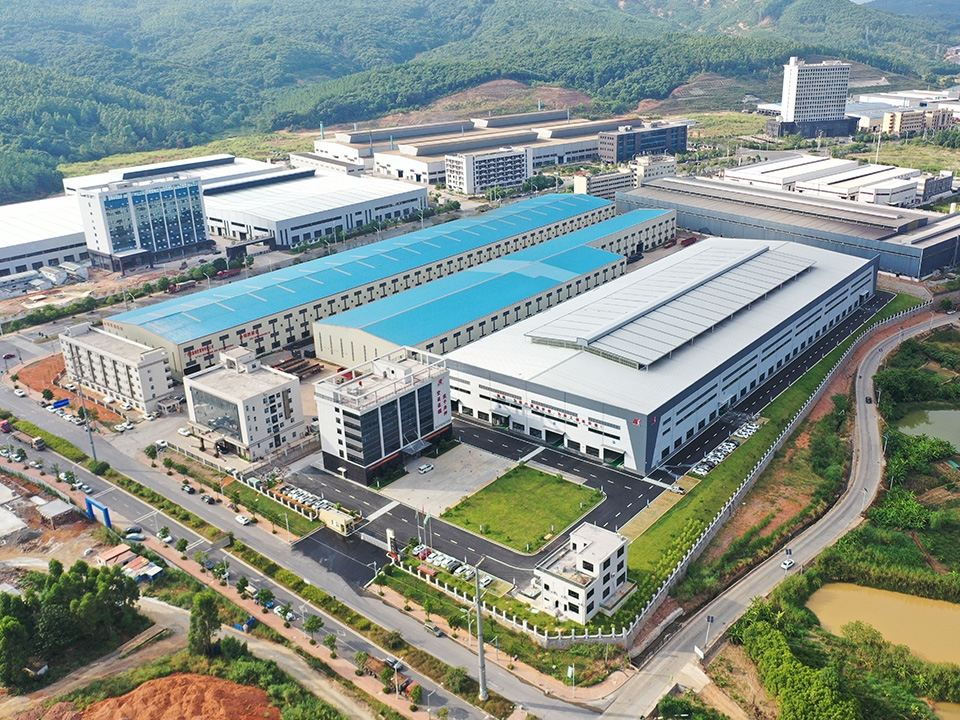
Advantages of Intermediate Frequency Furnaces
Reduced Noise Levels
The noise levels of intermediate frequency furnaces are 30% lower than similar products, creating a quieter working environment.
Enhanced Safety Features
The fully enclosed furnace shell effectively prevents coil ignition caused by dust pollution, ensuring a safer operating environment.
Lower Magnetic Radiation
The closed furnace shell provides secondary shielding for the coil’s magnetic field, reducing the amount of magnetic radiation generated by the equipment to only 10% of similar products. This is significantly lower than the national standard, ensuring a safer working environment for operators.
Comprehensive Leakage Alarm System
Rongke IDE furnaces are equipped with a full-time and all-round leakage alarm system to ensure operational safety.
- Leakage detection principle: The system detects molten iron seeping from the furnace lining, triggering the leakage current alarm when it contacts the current detection electrode. If the molten iron penetrates to the coil, the voltage detection circuit sounds alarms and indicates the specific location.
- Grounding alarm detection principle: The system triggers the alarm when the molten iron penetrates 2cm away from the coil, causing the leakage current of components to the ground to exceed the set value, or when the coolant’s conductivity is higher than the set value.
Energy Efficiency
Rongke furnaces use TU1 grade oxygen-free copper from Chinalco Luoyang Copper Co., Ltd., and the thickest wall copper tube in the industry made by cold extrusion process, combined with double coil technology, to achieve greater energy efficiency.
Magnet Yoke Technology
The magnet yoke, made from high-quality cold-rolled directional silicon steel sheets, has a magnetic loss of less than 105 and a coverage rate higher than 70%. It supports the induction coil from all directions and concentrates the induced magnetic field to the molten bath. Balanced water flow through both sides of the magnet yoke improves heat dissipation and working life, while combining cooling and supporting functions in a maintenance-free design. The use of premium silicon steel sheets and a first-class design contribute to low magnetic loss, minimal heat productivity, and a long working life.
Applications
Steel Industry
Intermediate frequency furnaces are widely employed in the steel industry for the melting and refining of steel. They are especially suited for producing high-quality steel with precise composition and temperature control.
Foundries
Foundries make extensive use of intermediate frequency furnaces for melting various metals, including iron, aluminum, and copper. These furnaces offer efficient and reliable melting processes, which are crucial for foundry operations.
Metalworking Industries
In the metalworking industries, intermediate frequency furnaces find application in heat treatment processes such as annealing, hardening, and tempering. These furnaces provide precise temperature control, ensuring consistent and high-quality results.
Maintenance and Safety
Regular Inspections and Maintenance Practices
Regular inspections of furnace components, such as coils, crucibles, and insulation, are essential to ensure optimal performance and prevent malfunctions. Maintenance practices should include cleaning, lubrication, and replacement of worn parts.
Safety Precautions for Operating Steel Frame Induction Furnaces
Safety precautions for operating intermediate frequency furnaces include wearing appropriate protective gear, ensuring proper ventilation, and following operational guidelines. Additionally, operators should be trained in emergency procedures and equipment shutdown protocols.
Training for Operators and Maintenance Personnel
Proper training for operators and maintenance personnel is crucial for safe and efficient furnace operation. Training should cover furnace operation principles, maintenance practices, and safety protocols. Ongoing training and refresher courses are also recommended to keep personnel updated with the latest industry standards and practices.
Closing Words
Steel frame intermediate frequency coreless induction furnaces play a crucial role in various industries, including steel manufacturing, foundries, and metalworking. Their advanced design and technology offer benefits such as reduced noise levels, enhanced safety features, and precise temperature control, making them ideal for producing high-quality steel and conducting heat treatment processes. Regular maintenance and adherence to safety protocols are essential for optimal performance and longevity. With ongoing training and advancements in technology, these furnaces continue to be integral to modern industrial processes, ensuring efficient and reliable operations.


